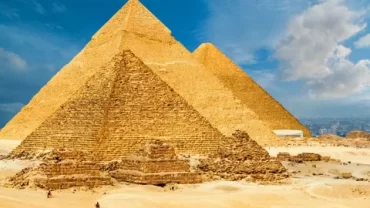
Introduction:Tutankhamun,
The ancient Egyptian civilization is steeped in mystique and wonder, with the boy pharaoh Tutankhamun standing as a symbol of this enigmatic past. Among the treasures discovered in his tomb, one particular symbol has captured the imagination of historians and enthusiasts alike: the Ankh, also known as the “Key of Life”. In this comprehensive article, we will delve into the significance of the Ankh, Tutankhamun’s reign, and its relevance in modern times.
Table of Contents
- Tutankhamun: A Glimpse into History
- 1.1 Early Life and Ascension
- 1.2 The Reign of Tutankhamun
- 1.3 The Discovery of Tutankhamun’s Tomb
- The Ankh: Symbol of Life and Immortality
- 2.1 Origins and Symbolism
- 2.2 Depictions and Variations
- 2.3 Ritual Use of the Ankh
- The Ankh in Tutankhamun’s Tomb
- 3.1 The Ankh’s Presence in Tutankhamun’s Funerary Goods
- 3.2 The Ankh and Its Role in the Afterlife
- The Spiritual Significance of the Ankh
- 4.1 The Ankh in Religious Practices
- 4.2 The Ankh as a Talisman
- The Ankh in Modern Culture
- 5.1 The Ankh in Contemporary Fashion
- 5.2 The Ankh in Popular Media
- Scientific Interpretations and Modern Research
- 6.1 Archeological Insights into the Ankh
- 6.2 The Ankh in the Context of Ancient Egyptian Beliefs
- Conclusion: The Eternal Legacy of Tutankhamun and the Ankh
1. Tutankhamun: A Glimpse into History
1.1 Early Life and Ascension

Tutankhamun, originally Tutankhaten, was born circa 1341 BCE during the 18th dynasty of ancient Egypt. His rise to power was marked by uncertainty and intrigue, owing to the turbulent times he inherited. This section will explore the circumstances surrounding his early life and his ascension to the throne.
1.2 The Reign of Tutankhamun
Despite his youth, his reign had a profound impact on Ancient Egypt. We will examine the major events, policies, and architectural endeavors that characterized his rule, shedding light on the challenges and triumphs he faced.

1.3 The Discovery of Tutankhamun’s Tomb
The discovery of a tomb by British archaeologist Howard Carter in 1922 was a monumental event in the field of Egyptology. This section will recount the awe-inspiring moment when the tomb’s treasures, including the iconic Ankh, were brought to light.

2. The Ankh: Symbol of Life and Immortality
2.1 Origins and Symbolism
The Ankh, often referred to as the “Key of Life”, is a symbol with deep-rooted significance in ancient Egyptian culture. This section will delve into the origins and intricate symbolism associated with the Ankh.
2.2 Depictions and Variations
Throughout history, the Ankh has taken various forms and adaptations. This portion will explore the different depictions and their nuanced meanings, providing insight into the evolution of this powerful symbol.
2.3 Ritual Use of the Ankh
The Ankh was a central component in religious ceremonies and rituals. This section will elucidate its role in ancient Egyptian religious practices, emphasizing its association with life, death, and rebirth.
3. The Ankh in Tutankhamun’s Tomb
3.1 The Ankh’s Presence in Funerary Goods
Among the treasures unearthed from the tomb, the Ankh held a prominent position. This segment will detail the various artifacts bearing the Ankh symbol, shedding light on their significance in the context of his burial.
3.2 The Ankh and Its Role in the Afterlife
Ancient Egyptians held strong beliefs about the afterlife, and the Ankh played a crucial role in their funerary rites. This section will explore how the symbol was intertwined with notions of immortality and the journey to the afterword.
Conclusion:
The Eternal Legacy of Tutankhamun and the Ankh

Reign and the Ankh symbolize the rich tapestry of ancient Egyptian culture and beliefs. Through meticulous examination, we have unraveled the mysteries surrounding this fascinating period in history. The Ankh, as the “Key of Life”, continues to captivate the imagination of people worldwide, leaving an indelible mark on both the past and the present.





Comment (0)